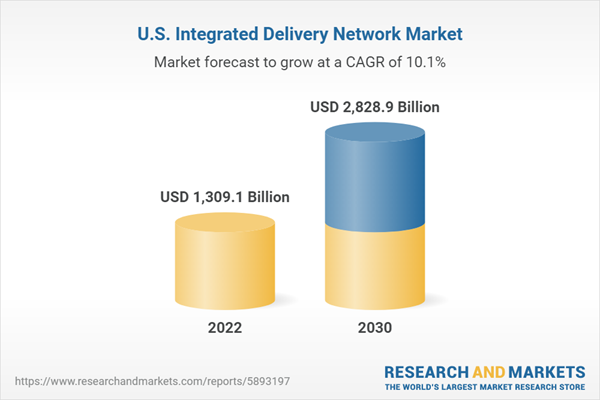The IDN is one of the key solutions to the healthcare burden in U.S., the consolidation among the various healthcare providers have improved the profit margin for all the healthcare institutes by reducing the operating cost and attaining economies of scale. With growing number of target population, the U.S. healthcare industry is going through rapid and continuous expansion, in terms of healthcare facilities, adoption of advanced technologies, and rise in the number of pharmaceutical companies, med-surg product manufacturers, and insurance providers in country.
The ongoing strategic initiatives by healthcare network to merge, partner, and expand the healthcare ecosystem, have allowed them to reach economies of scale, and thus is expected to drive the integrated delivery network market growth in U.S. IDN can be formed by a large and small number of hospital groups. Many integrated delivery networks dominate the market through strategic initiatives such as acquisitions and mergers, partnerships, and expansion of healthcare facilities.
In 2019, the acute care/hospital service segment held the largest market share owing high preference of acute care/hospital facilities among patients and rise in the number of surgeries performed in hospital infrastructure. In addition, various initiatives undertaken by IDNs to improve their service capability are propelling the segment growth.
U.S. Integrated Delivery Network Market Report Highlights
- Acute care/hospital services emerged as the largest segment with a revenue share of 49.5% in 2022
- Growing focus of healthcare institutes to reduce overall treatment cost and improve quality of care is one of the key factors driving the market growth
- Vertical integration segment is expected to be the largest and fastest-growing segment from 2022 to 2030
- The horizontal integration model involves grouping of organizations that offer a similar type of care; whereas, vertical integration involves grouping of healthcare systems, which are offering different levels of care under one umbrella
This product will be delivered within 1-3 business days.
Table of Contents
Companies Mentioned
- HCA Healthcare
- Ascension
- Kaiser Foundation Health Plan, Inc.
- UNITEDHEALTH GROUP
- Providence
- UPMC
- Trinity Health
- TH Medical
- CHSPSC, LLC
- CommonSpirit Health
Methodology

LOADING...
Table Information
| Report Attribute | Details |
|---|---|
| No. of Pages | 85 |
| Published | September 2023 |
| Forecast Period | 2022 - 2030 |
| Estimated Market Value ( USD | $ 1309.1 Billion |
| Forecasted Market Value ( USD | $ 2828.9 Billion |
| Compound Annual Growth Rate | 10.1% |
| Regions Covered | United States |
| No. of Companies Mentioned | 10 |









